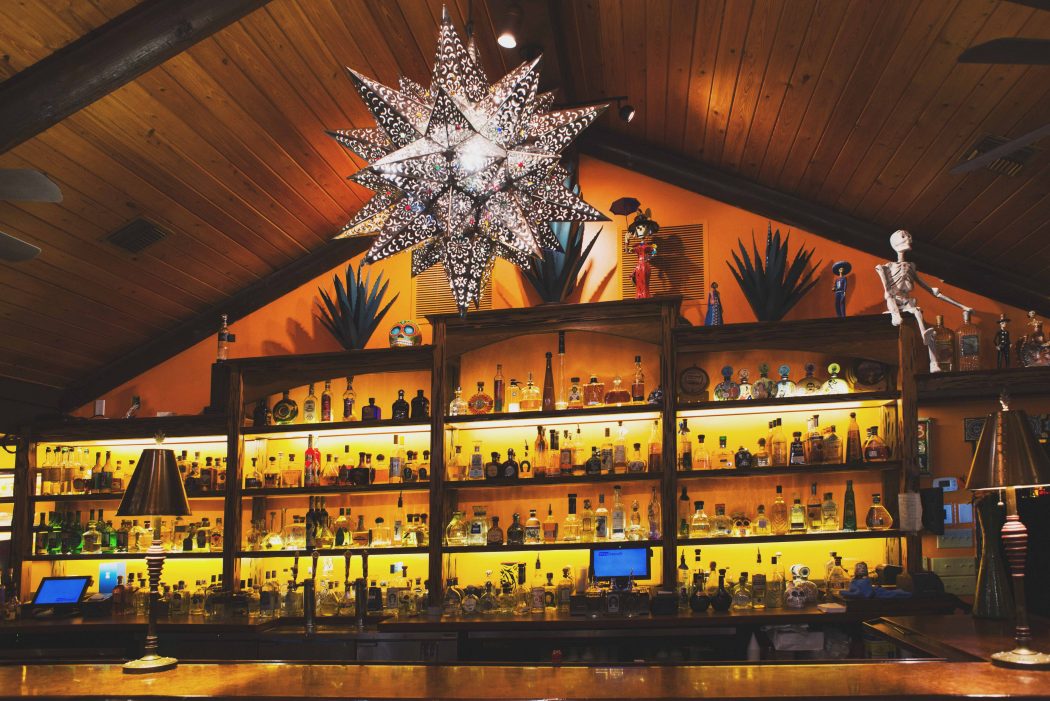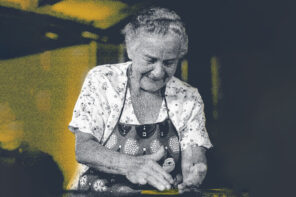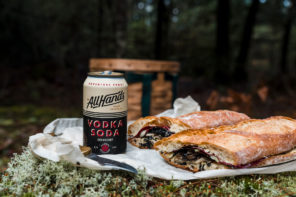It happens in bars all over the country, night after night. Licking the salty back of your hand and sucking a lime after swilling a cheap shot of tequila. As a spirit, tequila is getting more respect these days than ever before. And while some people may not have figured that out yet, right now is a good to put down the salt shaker, spare the lime and shake hands with the new, reputable taste of tequila. But before we get into that, I need to take you back to the beginning.
My most vivid memory of the cranial shit-storm caused by drinking cheap tequila in massive quantities is etched into my mind forever. Like a bad dream that replays itself over and over in your head, I see myself, reaching, in slow motion, for that handle of Dos Dedos (which, ominously translates to “Two Fingers”) tequila in a liquor store somewhere outside of Tampa, Florida in 1989. I was on the way to visit a girlfriend from back in high school for a wild night on campus at some giant, school-wide party.
The worst thing I remember, and probably shouldn’t even share, was breakfast in the campus cafeteria the next morning.
I thought, “What a better way to kick this off than with tequila?!” But I don’t think this tequila ever made it into a cup or shot glass. I remember a few weird details about what happened that night. The band that played out on the lawn was called Parade in Paris, and I feel like they had this Ramones look, and a Simple Minds or Tears for Fears sound, but—or despite that— I couldn’t get enough of it. Could the tequila have twisted me up anymore?
The worst thing I remember, and probably shouldn’t even share, was breakfast in the campus cafeteria the next morning. All I could think about eating was a couple boxes of Fruit Loops, which I’m pretty sure I deposited on the side of the highway on the way home with the world’s worst hangover. Does anyone ever fully recover from tequila nights like that? Yes. In fact, I’m proof you can.
Of course, I’ve heard every excuse in the book. The objections I hear most when I try to get people to “come back” to tequila are, “It makes me angry” or “It makes my clothes fall off” or “I get really weird when I drink tequila!” I get that. My response could easily have been, “Tequila reminds me of barfing up Fruit Loops for an entire day,” but here I am, enjoying tequila (and Fruit Loops) to this day.
It’s not at all difficult to do—to enjoy tequila, that is—once you understand the nuance, the sophistication and the art of tequila. It’s just not the same as it was back then, and it’s only getting better. When I was turned on to tequila as a legit spirit, I was running a barbecue and rib joint in Florida when a salesman from our liquor distributor suggested an aged tequila. He knew I was drinking bourbons, as well as some really good barrel-aged rums, so he thought I would love drinking tequila. Still, I had my doubts. The… the fruit loops!
Nevertheless, I trusted him, and he presented me with Sauza Triada Ańejo. It was in a cool bottle, with a golden or amber hue. With notes of vanilla and caramel, it tasted like nothing I had ever had before. Ańejo’s weren’t readily available at this time and the ones that were $100 per bottle weren’t quite on the market yet. The Triada was about $40 a bottle, and I was blown away. How could this be tequila?
And that was just the start. As the years went on, Triada kept dropping down the list of my preferred ańejos as more and more became available, but it was a solid introduction and it opened my mind up to the spirit—in a good way this time. I fell deeper into a bunch of tequilas, learning to tell the difference between good ones and great ones. And soon enough, I had worked out what my next venture would be: I was going to be the tequila guy.
A photo posted by TacoLu (@tacolujaxbeach) on
But first, I had some homework to do in order to go from drinking horrible tequila and suffering from its effects to becoming a connoisseur who owns one of the most well-respected tequila joints in the country. I started by learning from people like Clayton Szczech.
Clayton has immersed himself in Mexican and tequila culture; he lives in Mexico and hosts over 20 tours per year as part of Experience Tequila, a company he founded in 2008. He’s the tequila tour guide of epic proportion, and anytime he’s anywhere near Florida, we beg him to come speak to staff and friends who want to know more about tequila.
And that’s the key. When you start spending time with tequila people, you learn some pretty basic things right off the bat. Like when I refer to “cheap tequila,” I mean tequilas that are not made from 100% agave. Things like, a shot of tequila is not served chilled. Ever. The biggest thing that blows most beginners away is the fact that tequilas are enjoyed neat, from very nice glassware. No lime. No salt. No shit! Yep, not even chilled.
A photo posted by TacoLu (@tacolujaxbeach) on
So, after a brief stint of being unemployed, a trip to Mexico or two later, my wife and I opened the now infamous TacoLu—a fish taco, tequila and mezcal joint. In the years to follow, we were in overdrive learning everything about this amazing spirit that we could, from distillery tours in Jalisco to some serious mezcal training in Oaxaca.
The tequila industry in Mexico is highly regulated by the Mexican government. That’s not to say it’s bad for tequila; standards are set and, most would say that quality and purity of the spirit are protected, if not improved. I’m not big into regulations, but the industry has improved by leaps and bounds in the decades since these regulations were implemented.
Are people getting pushed out? Are some growers and distillers left out in the cold? Sure. Any regulated industry has two distinct sides to the story, but if we look at how far tequila has come in a relatively short amount time (centuries less than Cognac, Chartreuse, or Champagne, for instance), we see an insane amount of progress in consistency, quality, and production controls.
It’s gorgeous out today! Come join us on the patio for some margaritas and sunshine ?
A photo posted by TacoLu (@tacolujaxbeach) on
It’s sad to think about how many people have missed out on great tequila just because of one horrible Spring Break incident in high school or college. Hell, I myself have had dozens of those incidences. But I’m telling you right now, if you enjoy fine bourbon, whisk(e)y, or scotch, then you are the perfect candidate to be a tequila lover. And don’t even get me started on Mezcal.
Tequila Facts Your Friends/Date Will Be Impressed By
- Tequila is made exclusively from the Weber blue agave (agave tequilana, blue variety) under the supervision of the Tequila Regulatory Council (CRT) & monitored by the Mexican government. These dudes mean business. Agave geeks can check out crt.org.mx (Thankfully, this website is in English for gringos like me and you!)
- It can only be produced in a certain geographical region
- 100% agave tequila is made from only two ingredients—agave and water, making it a simple, more pure and flavorful tequila.
- It takes at least eight years to make a bottle of tequila, sometimes as long as 20.
- That’s because it is distilled from the roasted centre (piña) of the blue agave plant – the agave tequilana weber azul – one of 136 species of agave that grow in Mexico. The plant also has a lifespan of 8-14 years, depending on soil, climate and cultivation methods, and will be harvested at between 8 and 10 years.
- That’s about 3,000 days before the harvest… patience anyone?
The Four Types of Tequila Every Tequila Drinker Must Know
- Blanco or plata (“white” or “silver”): is generally a clear, un-aged tequila, “rested” in oak for up to 60 days. Bottled immediately or shortly after distillation, and is the purest form of tequila, usually featuring a strong presence of roast and/or raw agave flavors.
- Reposado (“rested”): has been aged in oak containers for at least two months. The aging imparts color and flavor to the tequila, smoothing it out and often adding notes of vanilla, oak, chocolate, coffee, nuts and whiskey to the palate. Reposado is the best-selling type of tequila in Mexico.
- Añejo (“aged”) tequila: has been aged in oak barrels for at least one year. These usually traded in much of their agave essence for oaky characteristics after so much time in the barrel. Some argue that an añejo, while obviously tequila, more closely resembles a cognac or Scotch than it does a blanco.
- Extra-añejos: Aged in oak barrels for at least three years, and sometimes as many as five. In blind tastings, the best extra-añejos are often taken for whiskies or brandies.
As my friend Ruben Aceves, from Herradura says, “Blancos always before lunch, after lunch—reposados, and ańejos… later still!” Great advice from a man who knows.
Keep up with Don + one of the best tequila-serving restaurants in the country via the TacoLu Instagram. And if you’re in the Jacksonville area, stop by the TacoLu restaurant and let Don know you read Tequila Nights. Firsthand reports show that there’s a 68% chance that your night will end in a sequel to the story.










